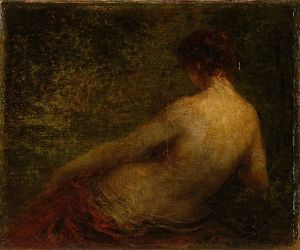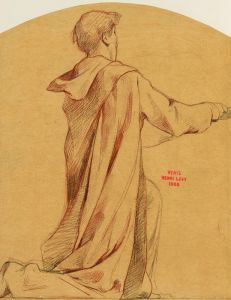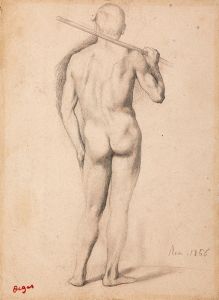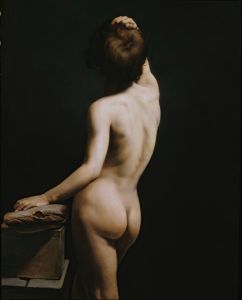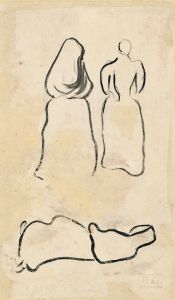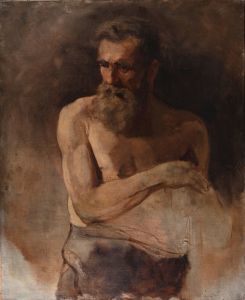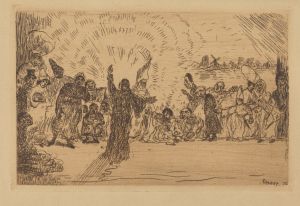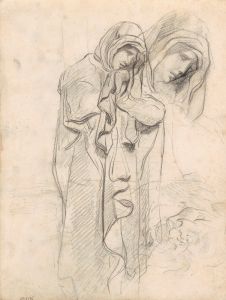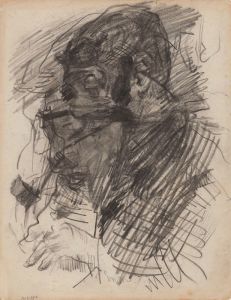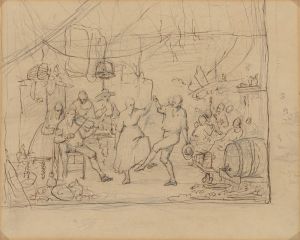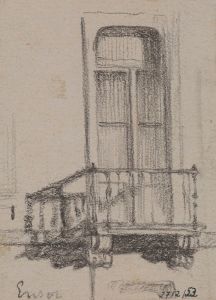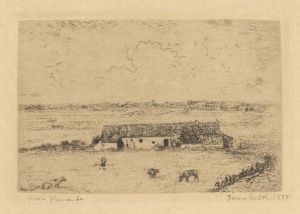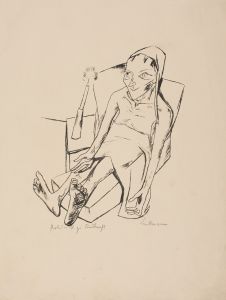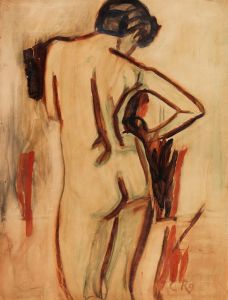
Silhouettes and two Figures Seen from the Back
A hand-painted replica of James Ensor’s masterpiece Silhouettes and two Figures Seen from the Back, meticulously crafted by professional artists to capture the true essence of the original. Each piece is created with museum-quality canvas and rare mineral pigments, carefully painted by experienced artists with delicate brushstrokes and rich, layered colors to perfectly recreate the texture of the original artwork. Unlike machine-printed reproductions, this hand-painted version brings the painting to life, infused with the artist’s emotions and skill in every stroke. Whether for personal collection or home decoration, it instantly elevates the artistic atmosphere of any space.
James Ensor, a prominent Belgian painter and printmaker, is known for his unique and often provocative style that blends elements of symbolism, expressionism, and surrealism. One of his lesser-known works, "Silhouettes and Two Figures Seen from the Back," exemplifies his distinctive approach to art, characterized by a fascination with the grotesque and the uncanny.
James Ensor was born in 1860 in Ostend, Belgium, and spent much of his life in this coastal city. His upbringing in a family that owned a curiosity shop filled with exotic and unusual items had a significant influence on his artistic vision. Ensor's work often reflects a fascination with masks, skeletons, and fantastical scenes, which are recurrent themes throughout his oeuvre.
"Silhouettes and Two Figures Seen from the Back" is a painting that captures Ensor's interest in the human form and its representation. While specific details about the creation date and the context of this particular painting are not widely documented, it fits within Ensor's broader body of work that often explores themes of identity, anonymity, and the human condition.
The painting features two figures viewed from behind, a perspective that Ensor employed to evoke a sense of mystery and detachment. This compositional choice invites viewers to contemplate the identities and emotions of the figures without the distraction of facial expressions. The use of silhouettes further enhances the enigmatic quality of the piece, as the figures are reduced to mere outlines, emphasizing form over detail.
Ensor's technique in this painting, as in many of his works, is characterized by bold brushstrokes and a vibrant color palette. His use of color and light creates a dynamic contrast that adds depth and intensity to the scene. The background and surrounding elements, though not specified in available records, likely contribute to the overall atmosphere of the painting, as Ensor often integrated elements of his environment and personal experiences into his work.
Throughout his career, Ensor was associated with the avant-garde movement in Belgium and was a member of the influential group Les XX, which included other notable artists such as Théo van Rysselberghe and Fernand Khnopff. His work was initially met with resistance and criticism due to its unconventional style and subject matter, but he eventually gained recognition and acclaim, particularly for his ability to capture the absurdity and complexity of modern life.
Ensor's legacy is marked by his influence on subsequent generations of artists, including the surrealists, who admired his imaginative and often unsettling imagery. "Silhouettes and Two Figures Seen from the Back," while not as famous as some of his other works like "The Entry of Christ into Brussels in 1889," nonetheless contributes to the understanding of his artistic vision and the themes that permeate his work.
In summary, "Silhouettes and Two Figures Seen from the Back" by James Ensor is a testament to the artist's fascination with the mysterious and the uncanny. Through his use of silhouettes and the depiction of figures from behind, Ensor invites viewers to engage with the painting on a deeper, more introspective level, reflecting on the nature of identity and the human experience.





